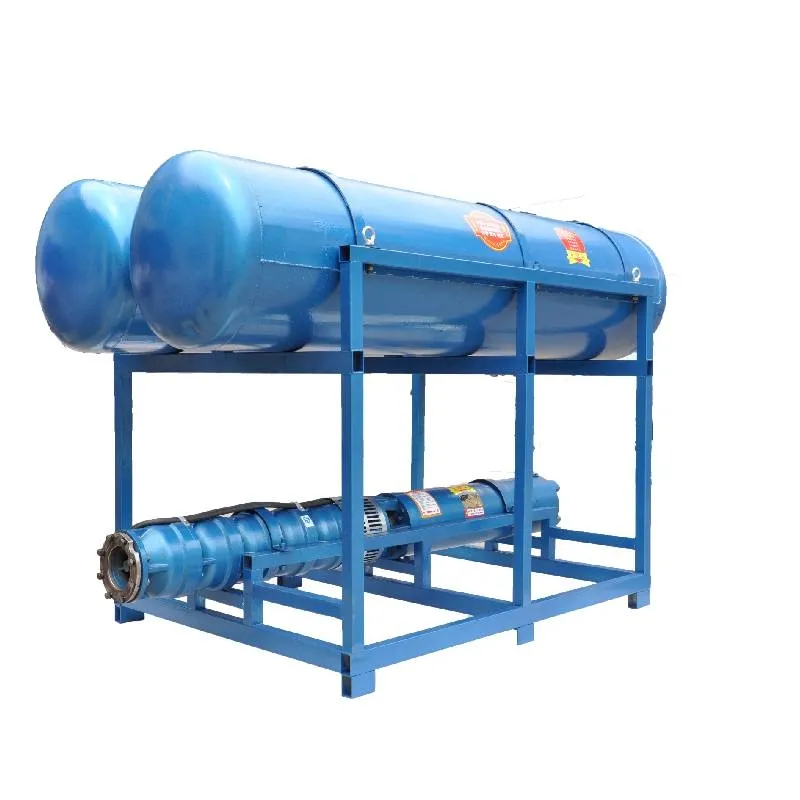Oct . 11, 2024 07:10 Back to list
water submersible pumps
Understanding Water Submersible Pumps An Essential Tool for Fluid Management
Water submersible pumps are vital devices widely used in various applications, from residential drainage systems to industrial processes. These pumps are designed to operate while submerged in water, making them highly effective for moving fluids from one place to another. In this article, we will explore the working principles of submersible pumps, their applications, benefits, and maintenance tips for efficient operation.
How Does a Water Submersible Pump Work?
A water submersible pump is essentially an electric pump sealed in a waterproof housing. The basic operating principle involves the conversion of rotational energy into kinetic energy and then into pressure energy. The pump motor, located at the bottom, drives the impeller, which creates a flow of water. The impeller spins, drawing water into the pump and pushing it upwards through the outlet.
Because these pumps function while submerged, they are uniquely suited for applications where water or other fluids need to be moved from lower to higher elevations. The design minimizes the risk of cavitation—a common problem where vapor bubbles form and collapse, potentially damaging the pump.
Applications of Submersible Pumps
Submersible pumps are versatile and find applications in a wide variety of fields
1. Residential Use They are commonly used in basements to remove floodwater, in swimming pools for drainage, and in wells to extract groundwater.
2. Agricultural Use Farmers often utilize submersible pumps for irrigation, supplying water to crops from wells or underground sources.
3. Industrial Applications In industrial settings, these pumps are vital for dewatering, managing stormwater, and even moving wastewater in treatment facilities.
4. Construction Sites Construction companies rely on submersible pumps to keep work sites dry during excavations and foundation work.
Benefits of Submersible Pumps
water submersible pumps

There are numerous benefits to using water submersible pumps, including
- Efficiency They are designed to move large volumes of water quickly, reducing the time and energy needed for water management tasks
. - Safety Being submerged in water reduces the risk of electrical hazards due to the pump's design and construction.- Reliability These pumps are built to withstand harsh conditions, ensuring consistent operation over extended periods.
- Space Saving Because they are compact and can be placed directly in water, they save valuable space compared to surface pumps.
Maintenance Tips
Despite their robust nature, submersible pumps require regular maintenance to ensure optimal performance
1. Inspect regularly Periodic checks for wear and tear on seals and impellers can prevent unexpected failures.
2. Clean the intake Ensure that the intake screen is free from debris, as clogs can significantly reduce efficiency.
3. Monitor the power supply A stable electrical supply is crucial. Check connections and wiring to prevent failures.
4. Test the pump Regular operational testing can help identify early signs of malfunction.
Conclusion
In conclusion, water submersible pumps are indispensable tools for fluid management across various sectors. Their efficiency, reliability, and safety make them a preferred choice for many applications. By understanding their operation and conducting regular maintenance, one can ensure that these pumps remain in good working condition, ready to tackle the challenges of fluid movement whenever required. Whether for residential needs or large-scale industrial applications, submersible pumps continue to play a crucial role in managing water effectively and efficiently.
-
Submersible Water Pump: The Efficient 'Power Pioneer' of the Underwater World
NewsJul.01,2025
-
Submersible Pond Pump: The Hidden Guardian of Water Landscape Ecology
NewsJul.01,2025
-
Stainless Well Pump: A Reliable and Durable Pumping Main Force
NewsJul.01,2025
-
Stainless Steel Submersible Pump: An Efficient and Versatile Tool for Underwater Operations
NewsJul.01,2025
-
Deep Well Submersible Pump: An Efficient 'Sucker' of Groundwater Sources
NewsJul.01,2025
-
Deep Water Well Pump: An Efficient 'Sucker' of Groundwater Sources
NewsJul.01,2025
-
 Submersible Water Pump: The Efficient 'Power Pioneer' of the Underwater WorldIn the field of hydraulic equipment, the Submersible Water Pump has become the core equipment for underwater operations and water resource transportation due to its unique design and excellent performance.Detail
Submersible Water Pump: The Efficient 'Power Pioneer' of the Underwater WorldIn the field of hydraulic equipment, the Submersible Water Pump has become the core equipment for underwater operations and water resource transportation due to its unique design and excellent performance.Detail -
 Submersible Pond Pump: The Hidden Guardian of Water Landscape EcologyIn courtyard landscapes, ecological ponds, and even small-scale water conservancy projects, there is a silent yet indispensable equipment - the Submersible Pond Pump.Detail
Submersible Pond Pump: The Hidden Guardian of Water Landscape EcologyIn courtyard landscapes, ecological ponds, and even small-scale water conservancy projects, there is a silent yet indispensable equipment - the Submersible Pond Pump.Detail -
 Stainless Well Pump: A Reliable and Durable Pumping Main ForceIn the field of water resource transportation, Stainless Well Pump has become the core equipment for various pumping scenarios with its excellent performance and reliable quality.Detail
Stainless Well Pump: A Reliable and Durable Pumping Main ForceIn the field of water resource transportation, Stainless Well Pump has become the core equipment for various pumping scenarios with its excellent performance and reliable quality.Detail
